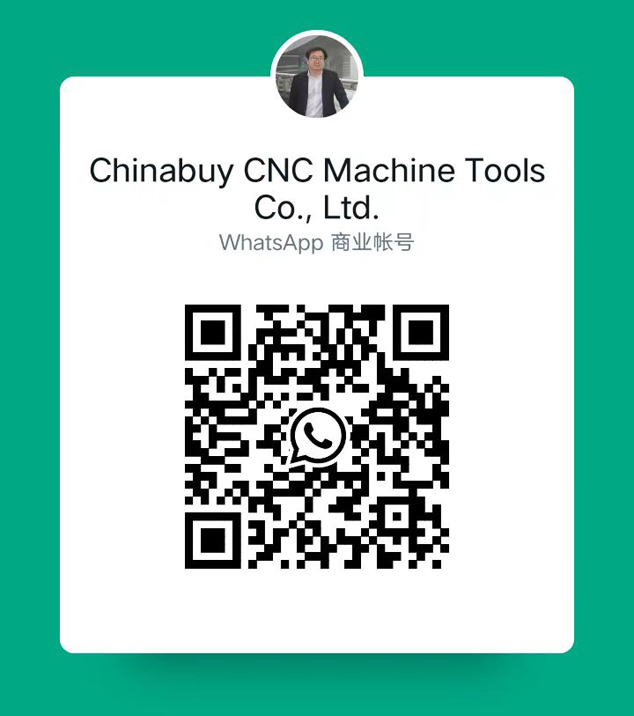
- Scan Our WeChat QR Code to Add Me to Your Contacts for Chat


A plate roll machine is a piece of equipment that is used to roll various types of sheet metal into round, semi-round, round with varying radii or conical shapes.
Some machines specialize in rolling materials back to flat too.
Working Principle
The working principle of the plate bending machine is to make the work roll move through the action of hydraulic pressure, mechanical force and other external forces, so that the plate can be bent or rolled into shape. According to the rotational movement and position changes of work rolls of different shapes, elliptical parts, arc parts, cylindrical parts and other parts can be processed.
Structural Features
The automatic feeding equipment of the plate bending machine is mainly composed of a plate trolley, an actuator, a plate transmission mechanism and an auxiliary mechanism. Sheet trolleys are used to place sheets to be rolled. The main function of the actuator is to transport the sheet to be rolled on the sheet trolley to the feeding platform. The transport operation of the sheet is mainly applied to the Cartesian coordinate manipulator and the vacuum suction cup pick-up device. In industrial automation systems, it is often necessary to pick up and transport workpieces, and vacuum suction cups are widely used as suction cup manipulators.
The transmission modes of the Cartesian coordinate manipulator mainly include mechanical transmission (rack and pinion transmission, synchronous belt transmission, ball screw transmission), linear motor transmission and pneumatic transmission. The sheet material transmission mechanism is mainly used to convey the sheet material to be rolled, and there are common roller shaft transmission and universal ball transmission. The main function of the auxiliary mechanism is to improve the rolling accuracy of the sheet metal. Common auxiliary mechanisms include the sheet material center alignment device, the push device and the displacement detection device.
The plate bending machine is a kind of equipment that uses work rolls to bend and form sheet materials. It can form parts of different shapes such as cylindrical parts and conical parts. It is very important processing equipment. The working principle of the plate bending machine is to make the work roll move through the action of hydraulic pressure, mechanical force and other external forces, so that the plate can be bent or rolled into shape. According to the rotational movement and position changes of work rolls of different shapes, elliptical parts, arc parts, cylindrical parts and other parts can be processed.
Structural features:
The automatic feeding equipment of the plate bending machine is mainly composed of a plate trolley, an actuator, a plate transmission mechanism, and an auxiliary mechanism. Sheet trolleys are used to place sheets to be rolled. The main function of the actuator is to transport the sheet to be rolled on the sheet trolley to the feeding platform. The transport operation of the sheet is mainly applied to the Cartesian coordinate manipulator and the vacuum suction cup pick-up device.
1.The operator should understand the structure and performance of the plate rolling machine, be familiar with the operation method of the control system and the bending process of the workpiece, and strictly abide by the safety operation matters. All buttons of the electronic control system must be in their original positions before driving and parking.
2.During the trial process, the oil supply of each lubricating point should be checked frequently, the oil supply at the dry oil point should be sufficient, and the reducer should maintain the specified oil level.
During the operation, if irregular noise, impact and swing are found, it should be stopped immediately for maintenance.
3.In the trial project, each transmission mechanism and connecting parts should be checked frequently to keep them free from looseness and damage.
It is not allowed to roll directly on the machine without flattened welds and unleveled steel plates.
4.When the sheet enters the formal bending, it must be perpendicular to the center line of the roller.
During the bending process, the sheet must move with the rollers, and no slippage is allowed.
5.When bending the cone barrel, the small end of the cone barrel must be at the end of the flip bearing.
During the bending process, the lifting and lowering of the upper roller, the disengagement of the overturning bearing, and the lifting of the upper roller must be carried out after the main drive is stopped.
6.During unloading work, after the machine stops, first loosen the overturn bearing, then disengage it and lay it flat, press the upper roller lift button to lift one end of the upper roller, take out the workpiece, and press the upper roller down button to make the upper roller lift. The roll-down button makes the upper roll flat, closes the flip bearing, and completes a workpiece cycle.
Operating procedures
Safety operation rules for three-roll plate rolling machine
1. The rolling machine must be managed by a special person.
2. The operator must be familiar with the structure, performance, and use of the plate rolling machine, and can operate it only after the approval of the responsible management personnel.
3. Before starting the machine, carefully check whether the safety device is in good condition.
4. During operation, it is strictly forbidden to put hands and feet on the rollers, transmission parts, and workpieces.
5. After the work is interrupted, the clutch should be turned neutral.
6. Multi-person collaborative work must be directed by a special person.
7. Overwork is strictly prohibited.
8. The tilting and resetting of the lifting and turning bearing of the upper roller and the balance of the upper roller must be carried out after the main drive is stopped.
9. It is forbidden to pile up workpieces and sundries in the workplace, and keep the machine tool and the site clean at all times.
10. After the work is completed, the power supply should be cut off and the power box should be locked.
Maintenance Program
1. According to the regulations in the machine lubrication diagram, add oil to each oil cup lubrication and manual lubrication points as required.
2. Roll the plate according to the parameters specified by the plate rolling machine, the thickness of the plate is 20mm, the maximum length is 2500mm, and the yield limit of the plate material is less than 250Mpa.
3. After the power is turned on, carry out the forward and reverse directions of the lower roller and the lifting and lowering of the upper roller, and check whether there is any abnormal stuck phenomenon in each movement.
4. Operate in strict accordance with the rolling process procedures and operation methods. When the upper roller is lifted to the limit position, great attention should be paid to the safe operation of the equipment.
5. When the main drive stops, the upper roller can be lifted and lowered, the overturned bearing can be tilted and reset, and the upper roller can be lifted.
6. During operation, if any abnormal phenomena such as irregular noise and impact are found, the machine should be stopped immediately forinspection.
7. During the operation, all personnel should coordinate with each other, obey the command of the person in charge of the rolling plate, and it is forbidden to start the machine without a password.
8. When rolling the plate, pay great attention to the fact that the hand is pressed by the steel plate and rolled in together with the steel plate.
9. Be careful not to collide with the machine when lifting the steel plate or reel with a crane.
After the coiling is completed, the site should be cleared as soon as the work is finished, the maintenance of the equipment should be done well, and the power should be turned off in time.
The plate rolling machine is a kind of equipment that uses work rolls to bend and form sheet materials. It can form parts of different shapes such as cylindrical parts and conical parts. It is very important processing equipment. The working principle of the plate bending machine is to make the work roll move through the action of hydraulic pressure, mechanical force and other external forces, so that the plate can be bent or rolled into shape. According to the rotational movement and position changes of work rolls of different shapes, elliptical parts, arc parts, cylindrical parts and other parts can be processed.
The upper roller of the symmetrical plate rolling machine is in the symmetrical position of the center of the two lower rollers through the hydraulic oil in the hydraulic cylinder acting on the piston to make vertical lifting motion, and the last stage gear of the main reducer drives the gears of the two lower rollers to mesh for a rotating motion, which is used for rolling plates. provide torque. The flat plastic metal plate of the plate rolling machine passes between the three work rolls of the plate rolling machine. With the help of the lower pressure of the upper roll and the rotational movement of the lower roll, the metal plate is continuously bent for multiple passes, resulting in permanent plastic deformation. Roll into the desired cylinder, cone, or part of them. The disadvantage of this hydraulic three-roll plate bending machine is that the end of the plate needs to be pre-bent with other equipment. The plate rolling machine is suitable for large plate rolling machines with a thickness of more than 50mm. A row of fixed idlers is added to the lower part of the two lower rollers to shorten the span of the two lower rollers, thereby improving the accuracy of the rolled workpiece and the overall performance of the machine.